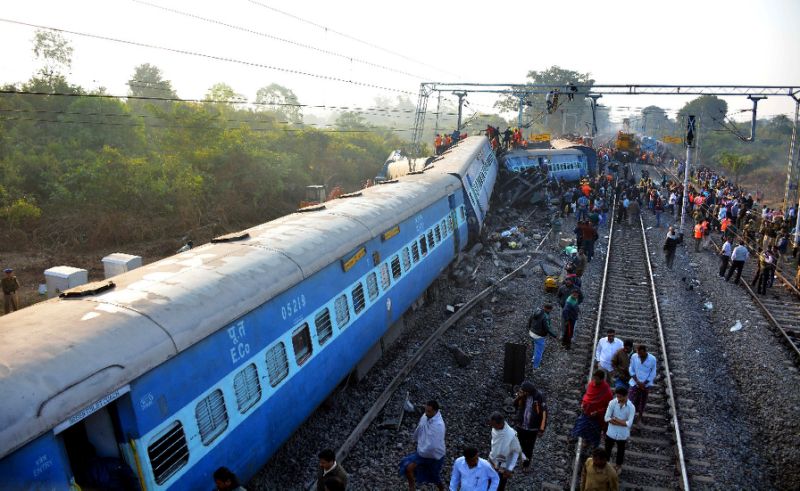Derailments – both on and off tracks – marked 2017 for the Indian Railways.
While the Narendra Modi government’s first railway minister Suresh Prabhu resigned after back-to-back train accidents, officers too saw their work privileges cut by the Railway Board – many of which were first in the history of the national transporter.
Advertisement
As far as accidents were concerned, despite Prabhu’s exit, the actual numbers showed an improvement from last year.
Derailments decreased – from 78 in 2016-2017 to 37 – in the first eight months of this year.
During April 1 to November 30, a total of 49 consequential train accidents took place in comparison to 104 in 2016-2017 and 107 in 2015-2016, according to figures provided by the railways.
Consequential train accidents include train accidents having serious repercussion in terms of loss of human life, human injury, loss to railway property or interruption to rail traffic.
While there was only one accident due to unmanned level crossing in the first eight months of 2017, there were three mishaps due to collisions this year as compared to five last year.
The worst accident this year was the derailment of the Kalinga Utkal Express near Khatauli in Muzaffarnagar district of Uttar Pradesh that snuffed out the lives of 23 people and left 156 injured.
Overall, this year, 48 people lost their lives and 188 were injured in train accidents as compared to 238 deaths and 607 injuries reported in 2016.
The ministry adopted a slew of measures to ensure accidents are reduced to a minimum in the coming year – renewal of tracks at a fast pace, use of ultrasonic flaw detection testing of rails, track recording cars and portable oscillation monitoring systems to detect track defects, introduction of train protection and warning system, and development of the Train Collision Avoidance System which is now at the trial stages.
It also strengthened the role of field officers.
To ensure faster decision making and fast movement across the railway network, new minister Piyush Goyal has empowered general managers, divisional railway managers and field officials with both financial and administrative powers.
Senior officials have also been given powers to re-engage retired railway employees up to 65 years of age against vacancies to take care of safety and maintenance-related works wherever there are vacancies.
However, 2017 was also a year in which many perks of senior babus were drastically amended. In a letter last month, the railway board was asked to cut its staff by 40 per cent and to identify at least 200 posts for transferring to zonal railways, as per the minister’s instructions.
The railway ministry has also asked its top officials to shun the luxury of their saloons and executive class travel privileges and start travelling in sleeper and AC 3-tier classes to experience the problems of ordinary passengers.
In an unprecedented move, the ministry brought to an end a 36-year-old protocol where it was mandatory for general managers to present themselves on arrival and departure of the Railway Board chairman and other board members during zonal visits.
Railway Board chairman Ashwani Lohani also issued instructions that no official will entertain bouquets and gifts at any time.
However, it’s not just in the office that senior officials of the national transporter have been asked to exercise restraint, but also at home.
All senior officials have been told to relieve all the railway staff who have been engaged as domestic help in their homes.
In the oft-repeated words of Goyal, who has been at the helm for nearly four months, “There is no restriction of funds for safety” – which seems to be the watchword for the transport behemoth in the next year.











